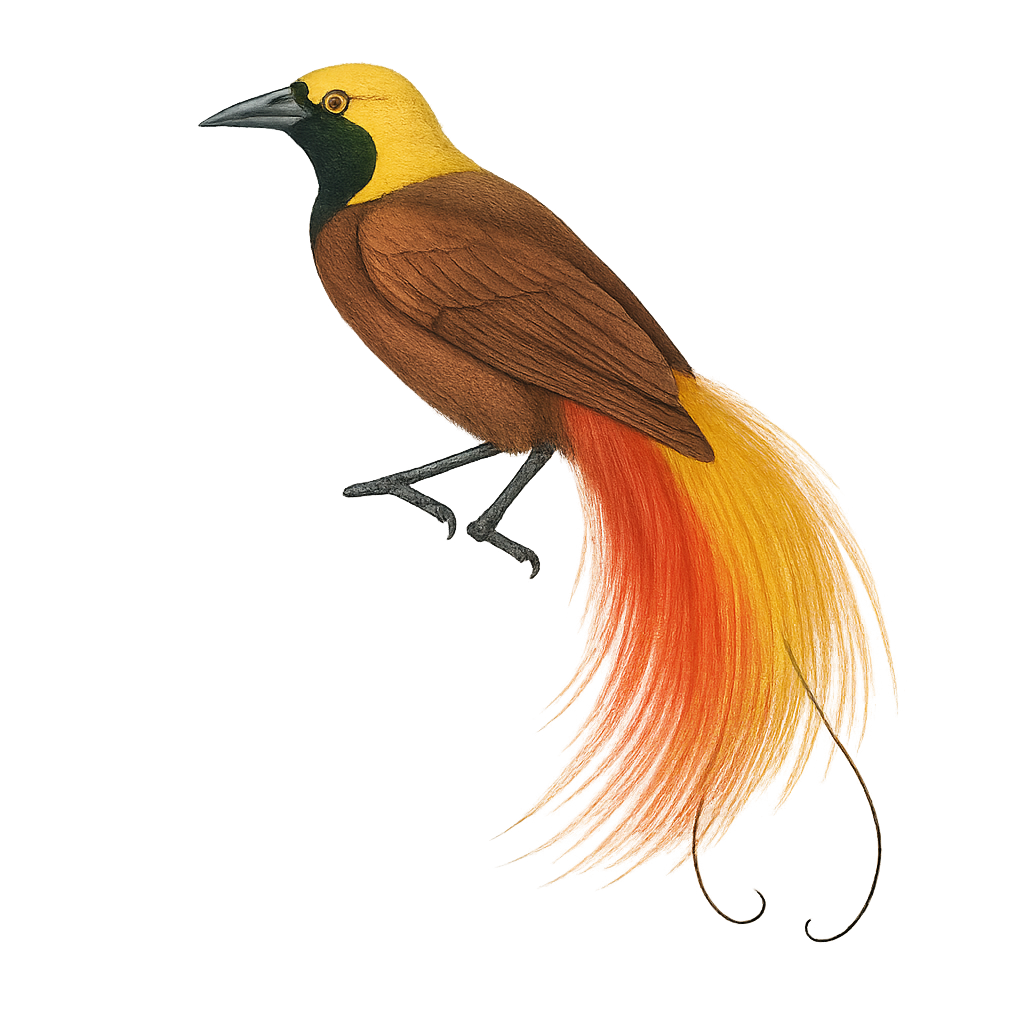Your wildlife photography guide.
Explore the raggiana bird-of-paradise in detail, study its behavior, prepare your shots.
Where to observe and photograph the raggiana bird-of-paradise in the wild
Learn where and when to spot the raggiana bird-of-paradise in the wild, how to identify the species based on distinctive features, and what natural environments it inhabits. The WildlifePhotographer app offers tailored photography tips that reflect the raggiana bird-of-paradise’s behavior, helping you capture better wildlife images. Explore the full species profile for key information including description, habitat, active periods, and approach techniques.
Raggiana Bird-of-paradise
Scientific name: Paradisaea raggiana

IUCN Status: Least Concern
Family: PARADISAEIDAE
Group: Birds
Sensitivity to human approach: Suspicious
Minimum approach distance: 10 m
Courtship display: June to August
Incubation: 17-19 jours
Hatchings: June to September
Habitat:
tropical rainforests, lowland forests
Activity period :
Primarily active during the day, with peak activity in the morning and late afternoon.
Identification and description:
The Raggiana Bird-of-paradise, or Paradisaea raggiana, is an iconic bird of the Paradisaeidae family, endemic to Papua New Guinea. It is renowned for its spectacular plumage, especially in males, who display bright red and orange feathers, along with elongated central plumes. These birds are famous for their impressive courtship displays, where males perform complex dances to attract females. They primarily inhabit tropical rainforests, feeding on fruits, insects, and small animals. Their melodious song and complex social behaviors make them a fascinating subject for ornithologists. Although their habitat is threatened by deforestation, they remain relatively common within their range.
Recommended lens:
400 mm – adjust based on distance, desired framing (portrait or habitat), and approach conditions.
Photography tips:
To photograph the Raggiana Bird-of-paradise, it's advisable to use a telephoto lens of at least 400mm to capture the details of its plumage without disturbing it. The best opportunities arise during courtship displays when males show off their colorful feathers. Opt for early morning hours to take advantage of soft, natural light. Be patient and discreet, as these birds can be suspicious. A tripod can be helpful to stabilize your camera and achieve sharp images. Finally, always respect the safety distance to avoid disrupting their natural behavior.
The WildlifePhotographer App is coming soon!
Be the first to explore the best nature spots, track rutting seasons, log your observations, and observe more wildlife.
Already 1 449 wildlife lovers subscribed worldwide

